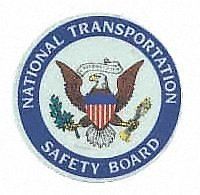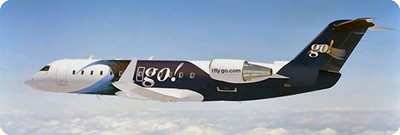Early Investigation Rules Out Mechanical Issues
 Barring a surprise
revelation, it appears two go! Airlines pilots have some explaining
to do regarding the recent airport overshoot of an inter-island
flight in Hawaii. And they might consider bringing some coffee with
them into the debrief room.
Barring a surprise
revelation, it appears two go! Airlines pilots have some explaining
to do regarding the recent airport overshoot of an inter-island
flight in Hawaii. And they might consider bringing some coffee with
them into the debrief room.
This weekend, the National Transportation Safety Board released
its Preliminary Report into the February 13 incident, in which a
CRJ200 flying from Honolulu to Hilo overshot the destination
airport and flew 15 miles out to sea at FL210, out of contact with
puzzled controllers. The aircraft eventually turned back to Hilo,
and landed uneventfully.
Earlier indications pointed to the possibility the two-person
flight crew fell asleep, or somehow became otherwise indisposed. A
wide range of issues remain under consideration, including the
possibility of a pressurization problem, or miscommunication.
However, the Prelim -- shown below -- seems to rule out any
mechanical issue that could have led the aircraft astray, including
the possibility the crew may have asphyxiated and passed out due to
carbon monoxide poisoning.
The NTSB also notes controllers were able to reestablish radio
contact with the flight crew, which seems to strike down a possible
communications problem.
As ANN reported, go! parent
company Mesa Air Group suspended both pilots last week, pending the
findings of the investigation. As the saying goes... this keeps
getting curiouser and curiouser --
Ed.

NTSB Identification: SEA08IA080
Scheduled 14 CFR Part 121: Air Carrier operation of Mesa Airlines
(D.B.A. GO)
Incident occurred Wednesday, February 13, 2008 in Hilo, HI
Aircraft: Bombardier, Inc. CL-600-2B19, registration: N651BR
Injuries: 43 Uninjured.
This is preliminary information, subject to change, and may
contain errors. Any errors in this report will be corrected when
the final report has been completed.
On February 13, 2008, about 1000 Hawaiian standard time, a
Bombardier, Inc., CL-600-2B19, N651BR, operated by Mesa Airlines,
dba GO!, Phoenix, Arizona, overflew its destination airport,
General Lyman Field (HTO), Hilo, Hawaii, while in cruise flight.
The airplane subsequently reversed course, descended, and landed
uneventfully at HTO. The incident occurred during a regularly
scheduled, domestic, passenger flight, which was conducted in
accordance with 14 CFR Part 121, and an instrument flight rules
flight plan was filed and activated. The airplane was not damaged,
and there were no injuries to the 40 passengers or 3 crewmembers.
The flight originated from the Honolulu International Airport,
Honolulu, Hawaii, about 0916.
According to air traffic control personnel, the airplane was in
cruise flight at 21,000 feet when the controller made several
unsuccessful attempts to contact the flight crew. About 1000, the
controller was able to established radio contact with the flight
crew, but only after the airplane had overflown HTO by about 15
miles. The controller then issued the flight crew a course change
back to HTO, where it landed about 15 minutes later.
Company maintenance personnel subsequently performed a
functionality check on the airplane's pressurization system. The
check proved negative for any system anomalies. Additionally, the
airplane was checked for carbon monoxide exposure with negative
results.
 ANN's Daily Aero-Linx (04.30.25)
ANN's Daily Aero-Linx (04.30.25) ANN FAQ: Turn On Post Notifications
ANN FAQ: Turn On Post Notifications Classic Aero-TV: Agile Aeros Jeff Greason--Disruptive Aerospace Innovations
Classic Aero-TV: Agile Aeros Jeff Greason--Disruptive Aerospace Innovations Aero-News: Quote of the Day (04.30.25)
Aero-News: Quote of the Day (04.30.25) ANN's Daily Aero-Term (04.30.25): Expedite
ANN's Daily Aero-Term (04.30.25): Expedite




